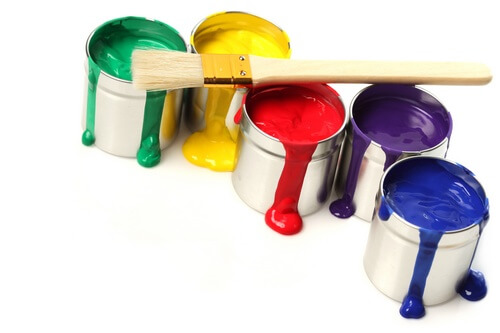Continuing the topic of food additives, we dwell on dyes. So, curcumin (Е100) we have already known. How do its «brothers»? affect our health? Considering the top five dyes to enhance the degree of toxicity, the compounds are arranged as follows:
- blue (Е133);
- yellow (Е102);
- green (Е133+Е102);
- orange (Е110);
- red (Е124).
In short, the red dye is the most dangerous.
Dye Е133
Е133 - diamond blue is a synthetic type of dye that is highly soluble in water. It has the appearance of a blue powder. It is synthesized from a liquid during the distillation of coal (coke production). It can be combined with tartazine (E102) to get different shades of green. Most often, we meet this dye when buying ice cream, canned peas, milk, sweets and drinks.
According to some studies, products containing this dye are especially harmful to children. Their consumption can lead to hyperactivity, nausea, urticaria, and insomnia. It was found that in high concentrations it is precipitated in the kidneys and at the level of lymphatic vessels. Permissible daily allowance: 5 mg per kg body weight.
Dye Е102
Е102 - tartrazine is a synthetic compound of sodium salt containing sulfur. It has the appearance of yellow crystals. We find it in cakes, drinks, canned vegetables (except tomatoes), syrups. It leads to cropping, allergic rhinitis, asthma, impaired vision and insomnia. It can serve as a carcinogenic mutagen. The use of tartrazine is prohibited in Austria, Finland and Norway. It is believed that the dye E102 can cause problems with mental development in children. Permissible daily allowance: 7.5 mg per kg body weight.
Dye Е110
Е110 - E110 E110 - orange yellow (orange sunset), synthetic azo dye. Usually found in apricot jam, orange jelly, instant chocolate drinks, instant soups, cheese spreads, creams, yoghurts, gingerbread cookies, powder puddings. Risks: hyperactivity, asthma, urticaria, abdominal pain, insomnia, vomiting. In addition, there are research data that indicate a possible carcinogenic effect of the above dye. Especially one should be attentive to E110 asthmatics and people allergic to aspirin. Permissible daily allowance: 2.5 mg per kg body weight.
Dye Е124
Е124 - red cochineal, synthetic azo dye. Contained in sweets, syrups, ketchup, canned salmon, cherries, carbonated drinks, marzipan, jelly. Risks: hyperactivity, asthma, urticaria, insomnia. Children and asthmatics are not recommended at all, it can be a carcinogen. Permissible daily allowance: 4 mg per kg body weight. .
We hope that after receiving even a grain of reliable information about the colossal risks that dyes bear so generously added by manufacturers to products, the consumer will seriously think before putting another bottle of bright green water into the basket or feeding the child seductively with orange salmon. After all, only we are responsible for our health and the health of our loved ones.
















